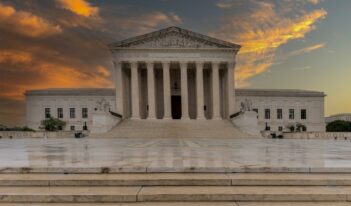
Despite concerns, environmental agency’s “transparent science” proposed rule supports existing guidelines.
Contrary to what the strong reactions to the U.S. Environmental Protection Agency’s (EPA) “transparent science” proposal might suggest, the proposal is not as dramatic as either supporters or detractors imply. Its core principles actually conform with guidelines adopted by previous administrations.
Principle #1: EPA will clearly identify and make publicly available the studies and science relied on for significant regulatory actions. When the Office of Information and Regulatory Affairs (OIRA) tallies up the estimated benefits of all federal regulations, EPA’s rules compose 65 percent to 80 percent of the total. Given the significance of these estimates, documenting and making available for public review the underlying science supporting them is essential, as previous administrations have acknowledged.
In 2009, President Barack Obama issued a memorandum to agencies that encouraged “transparency in the preparation, identification, and use of scientific and technological information in policymaking” and affirmed that “scientific and technological information…should ordinarily be made available to the public.” The Office of Management and Budget’s (OMB) 2002 information quality guidelines directed agencies to make publicly available any relevant peer-reviewed studies that provide support for or contradict estimated effects.
Principle #2: EPA will make dose-response data and models underlying pivotal regulatory science publicly available for independent validation. The selection of the model used to estimate responses to exposures to contaminants can have significant impacts on estimated regulatory benefits. In 2007, OIRA and the Office of Science and Technology Policy (OSTP) observed that a “high degree of transparency with respect to data, assumptions, and methods will increase the credibility of the risk analysis, and will allow interested individuals, internal and external to the agency, to understand better the technical basis of the analysis.”
In 2010, the OSTP directed agencies to develop policies to “facilitate the free flow of scientific and technical information, consistent with privacy and classification standards.” President Obama’s science advisor, John Holdren, instructed agencies to “expand and promote access to scientific and technological information”—including data and models underlying regulatory proposals—“by making it available online in open formats.”
EPA’s proposal to make the data and models underlying its pivotal regulatory science public also conforms with developments in scholarly journals. In 2013, for example, Nature took steps to ensure it reported key methodological details and prompted “authors to be transparent,” by, for example, including the raw data used in their studies. The journal Science has also focused “on making data more open, easier to access, more discoverable, and more thoroughly documented.”
EPA’s proposal states that it would consider information to be “‘publicly available in a manner sufficient for independent validation’ when it includes the information necessary for the public to understand, assess, and replicate findings.” This emphasis on replicability can encourage the process of challenge and validation that underscores the scientific method. The proposal conforms with OMB’s 2002 information quality guidelines, which require that significant information disseminated to the public be “‘capable of being substantially reproduced’…subject to an acceptable degree of imprecision.”
Principle #3: EPA will describe and document its assumptions and methods and show how sensitive modeled results are to those and alternative assumptions. In 2010, the OSTP directed agencies to communicate scientific and technological findings to the public “by including a clear explication of underlying assumptions; accurate contextualization of uncertainties; and a description of the probabilities associated with both optimistic and pessimistic projections, including best-case and worst-case scenarios where appropriate.”
Documentation and sensitivity analysis are important, because assumptions and judgments become embedded in predictions of health risk under different policy options and can—intentionally or not—influence the ultimate advice that researchers give to decision-makers and the public. Documenting these assumptions and estimating how predicted outcomes vary with alternative assumptions and judgments, could greatly improve the transparency and quality of EPA’s decisions. As a group of 19 regulatory analysis experts warned, “analyses that do not provide information on how sensitive the primary estimate is to assumptions, data, and models, and the range of outcomes possible under reasonable alternative analytic assumptions should raise questions.”
Principle #4: EPA will explicitly consider high-quality studies that offer new dose response information that may allow the agency to move away from default assumptions. In estimating adverse effects of exposure to many pollutants, EPA relies on a default linear, no-threshold dose-response model. Both theory and observation suggest that thresholds exist below which further reductions in exposure do not yield changes in mortality response. More accurate dose-response functions, however, are elusive. The default linear no-threshold assumption is convenient in that it allows EPA to estimate incremental health improvements in proportion to estimated reductions in exposure, but, if the assumption is inaccurate, it can lead to under- or over-estimates of risks at relevant exposure levels and to a misallocation of resources.
EPA’s proposed commitment to consider research that can help clarify the effect of low-dose exposure to key pollutants would not only improve short-term policy outcomes, but the commitment would also provide incentives for researchers to devote attention and resources to exploring and reducing this key uncertainty.
Principle #5: EPA will conduct independent peer review on all pivotal regulatory science used to support regulatory decisions. Peer review represents a fundamental component of the scientific process and EPA’s proposed approach conforms with OMB’s 2004 guidelines to all federal agencies and departments on using external peer review. When engaging experts in peer review, EPA should also consider the recommendations of recent interdisciplinary efforts in the context of scientific advisory panels. Such advisors can provide a necessary and valuable source of information and peer review for agency science, but care should be taken in both the composition of the panels and the charges they are given.
Principle #6: EPA will apply practices to protect privacy and confidentiality of information. EPA acknowledges concerns that increased transparency and public access to data may risk exposing confidential or private information. The agency, however, points to practices at other federal agencies and in scientific publishing that can ensure the protection of confidential or personally identifiable information. Depending on the situation and sensitivity of the information, data can be shared through a range of measures that allow access for replication and validation purposes while protecting personally identifiable information.
In conclusion, EPA’s proposed rule attempts to balance the competing public goals of ensuring policy decisions are transparent and based on the best available science, while protecting privacy and confidentiality. Building on existing guidelines, the rule includes reasonable principles that could improve the evidentiary basis for EPA’s regulatory policies and thus improve regulatory outcomes by targeting resources where the largest benefits can be achieved.
Constructive public comment on this proposal will be essential. As President Obama’s science advisor once observed, “Open communication among scientists and engineers, and between these experts and the public, accelerates scientific and technological advancement, strengthens the economy, educates the nation, and enhances democracy.”
This essay is part of a four-part series, entitled Science, Transparency, and Environmental Policy.




